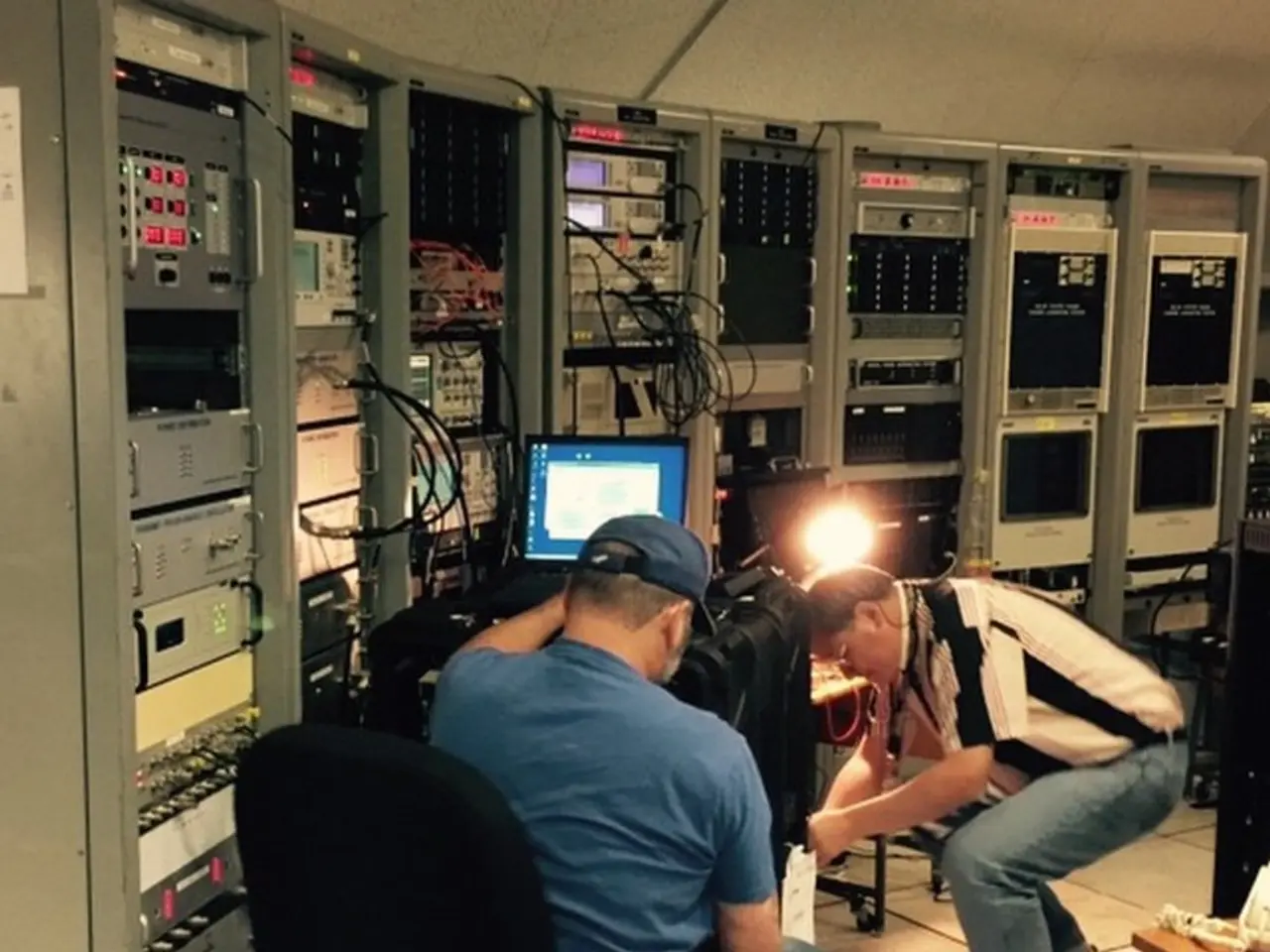Unveiling Upgrades in ALICE at AGH University of Krakow - Exploring Past, Current Situation, and Future Plans
The AGH University of Krakow electronics team has taken on an ambitious project: further developing and improving the front-end electronics (FEE) for the Fast Interaction Trigger (FIT) Project, a key component of the ALICE experiment at CERN.
Despite limited experience in FIT, the team has embraced the challenge. This endeavour is part of the university's ongoing commitment to advancing electronics and software engineering, as well as applying artificial intelligence and machine learning to data acquisition, analysis, and simulations.
In 2024, a dedicated FIT laboratory was established at AGH, equipped with multiple integrated components for reliable, high-speed triggering and data acquisition. This laboratory is a testament to the university's dedication to the project.
The choice of model for the simulations is carefully tailored to the specific analysis needs, balancing speed against the required level of detail in the simulated data. The team is using a suite of state-of-the-art generative models, including generative adversarial networks (GANs), variational autoencoders (VAEs), diffusion models, and normalising flows.
The models are conditioned on the parameters of particles produced immediately after beam collisions. This approach allows for the emulation of detector responses with speed and accuracy, thanks to the development of ML-based surrogate models.
The team is currently focusing on simulations for the Zero Degree Calorimeter (ZDC) and Forward Hadronic Calorimeter (FoCal-H). They are also exploring symbolic and pattern-based alternatives, such as the Deep Associative Closed-Pattern Structure (DeepACPS).
During the COVID-19 period, collaboration and the AGH group's ability to quickly absorb project details were particularly challenging. However, the university has persevered, demonstrating its resilience and adaptability.
Since joining ALICE in 2017, AGH University of Krakow has played a significant role in the experiment's development. In 2017, the university became an associate member, and in 2020, it was elevated to a full member.
The university's involvement in ALICE is part of a long-standing tradition of collaboration between CERN and the Krakow scientific community in high-energy physics, electronics, instrument design, and supporting activities.
Moreover, the AGH team is aiming to develop readout electronics for the planned ALICE 3 Forward Detector. The goal is to make the electronics radiation tolerant and enable more precise measurements. This ambition is to deliver an ML-based alternative to the current simulation engines at the ALICE experiment, a significant leap forward in the field.
Recently, AGH specialists were able to introduce an immediate improvement to the existing FEE CFD, allowing input pulses with an extended range up to 5 V. This advancement underscores the team's commitment to pushing the boundaries of technology.
Both the ZDC and FoCal-H detectors have a 'spaghetti-type' structure and can be represented on two-dimensional planes as images. The group's workflow includes advanced preprocessing, robust model training strategies, and post-processing techniques to handle these complex structures effectively.
Another notable achievement is the development of a new method to improve job scheduling in the ALICE computing grid. This method uses machine learning to predict a job's wall execution time, improving overall efficiency.
The University of Heidelberg has been involved in the ALICE experiment since 1993 and has contributed significantly to its development. Regarding the ALICE Run 4 upgrade, developments focus on the readout electronics for the FIT detector, aiming to handle higher data rates and improve timing resolution to accommodate the increased luminosity and event rates planned for Run 4. However, specific details on the exact readout electronics technologies planned for the FIT detector upgrade were not directly found in the search results. The Heidelberg group has been among those contributing to ALICE upgrades historically.
In conclusion, the AGH University of Krakow's electronics team is making significant strides in the development of the FIT project for the ALICE experiment. Their work in machine learning, generative models, and job scheduling is helping to shape the future of high-energy physics research at CERN.
Read also:
- Experiencing Life's Variety Firsthand: Gaining Insights from Life's Broad Spectrum of Experiences
- Impact of Complex Post-Traumatic Stress Disorder on Romantic Relationships: Symptoms, Causes, and Precautions
- Strategies for Keeping Work Reasonable and Rewarding for those with Autism and ADHD
- Impaired Driving Awareness Campaign Announced by MADD Under the Name "End Herre"








